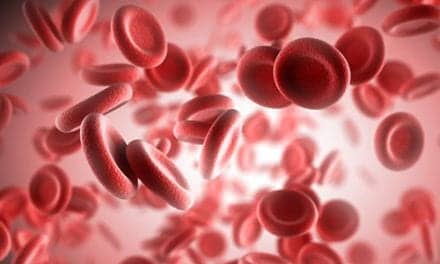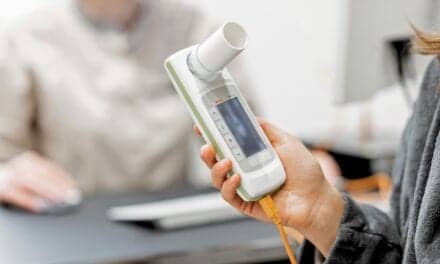Recent studies have shown that lung ultrasound has the potential to be an effective and convenient point-of-care imaging tool in the ICU, including for patients on mechanical ventilation.
Lung ultrasounds can help save lives in emergency care units and have the potential to support acute care units throughout the country. This test can enhance the diagnostic process, so why not train respiratory therapists in your ICU department to conduct them?
The administration at Loma Linda University’s medical center decided to do just that. The center’s intensive care unit now has five RTs who are trained to administer lung ultrasounds and there are another five at the Loma Linda hospital Medical Center East Campus. The university’s bachelor’s degree in respiratory therapy is one of the first in the nation to come with training in lung ultrasound. There is also a continuing education program with just 14 contact hours, in which respiratory therapists can get hands-on guidance and experience monitoring critically ill patients by using lung ultrasounds.
In an ideal future, every patient who is experiencing a cardiorespiratory emergency, would have an ultrasound probe at their bedside, said Richard Nelson, MD, MS, RCP, RRT-NPS, program director of the bachelor’s of science in respiratory care program at Loma Linda University in California.
“I think more and more we want to have real-time assessment as opposed to just the daily chest x-ray,” said Nelson.
To keep their skillset up-to-date, Nelson said that RTs should get this type of training. “Whether or not respiratory care practitioners use lung ultrasound, physicians at the bedside, more and more, will. So either we get on board and be efficient assistants to the physician or we will be seen as perhaps marginalized by not getting involved,” said Nelson.
The Loma Linda Medical Center is undertaking this experiment to see if it is worth the investment in time to train respiratory care practitioners in taking ultrasounds of the lungs, particularly using a technique called the Blue Protocol, a systematic approach to imaging the lungs.
The Blue Protocol was developed by the physician Daniel A. Lichtenstein, who wrote the book, Lung Ultrasound in the Critically Ill: The BLUE Protocol. This work is in large part the inspiration for Loma Linda University’s efforts in trying to implement the technique.
In early 2017, Nelson traveled to Paris, France to study under Lichtenstein and get training on the protocol. “I spent a couple of weeks there so I could be humbled to see that such a simple procedure, using old equipment can come up with such dramatic results,” says Nelson.
The blue protocol involves rapidly assessing the chest for movement of the pleura, which is to see whether or not the parietal and visceral pleura are in contact with each other. This is to establish that the pleura, the linings of the lungs, are sliding back and forth over each other with normal respiration.
Once you establish the sliding, you can look to see if there is air in the lung or water in the lungs and then you can rapidly, in between one to three minutes, place the findings into different profiles, including pulmonary edema, pneumonia, pneumothorax, COPD, asthmatic exasperations, and the high probability of pulmonary embolism.
The technique is easy to learn, simple to perform, and has a clear application in an acute care setting, according to a recent paper published in the journal Respiratory Care.1 Additionally, respiratory practitioners are uniquely suited to conduct ultrasounds of the lungs. “The in-depth knowledge and skills possessed by RTs, acquired throughout their academic and clinical careers, provide an ideal foundation for them to identify and manage any cardiorespiratory emergency,” the paper’s authors wrote.
In one study that focused on lung ultrasound training for RTs, the authors concluded that practitioners trained in ultrasound are independently capable of performing the imaging with accuracy rates of as much as 95%.2
According to Nelson, one of the main benefits of training RTs in lung ultrasound lies in efficiency. If there is a status change with a patient, the practitioners can rapidly assess the change using this technique.
You can quickly see whether the lungs are dry or wet, whether the lungs are sliding or not. You can rule out or confirm pneumothorax within seconds with proper training, said Nelson.
By independently monitoring a patient in this way, RTs can then inform the physician of their findings. This allows the critical care therapist to be the eyes and ears of the physician when the physician is not assessing the patient, said Nelson.
When department managers are considering whether or not to train the RTs in their department on lung ultrasound, they might consider whether the practitioners are already overworked or have too may responsibilities. There could be some concerns that the time it takes to learn this new skill and implement it might be taxing on an already overextended respiratory practitioner, explains Nelson.
Another downside to consider is the time spent on infection control since after administering lung ultrasound the probe and the cable must be properly disinfected. “It takes longer to actually maintain infection control than it takes to actually do the procedure,” said Nelson. Still, it appears as if the benefits outweigh any extra time it may take for cleaning.
If respiratory care managers are interested in training their RTs in lung ultrasound, but don’t want to ask their employees to travel, Loma Linda University has the ability to set up a training program off-site.
“We’ve figured out what works well and we can implement this in any setting, whether local or international,” said Nelson. “We believe that in the future, the ideal will be to have an ultrasound probe at every bedside.” RT
Editor’s note: To request an on-site training program or to learn more about continuing education in respiratory therapy at Loma Linda University, visit the department’s website at https://alliedhealth.llu.edu/academics/cardiopulmonary-sciences/contact-cardiopulmonary-sciences or call 909-558-4932.
Lisa Spear is associate editor of RT Magazine. For more information, contact
[email protected].
References
- Lung Ultrasound: The Emerging Role of Respiratory Therapists rc.rcjournal.com/content/64/2/217.
- Ultrasound training: curriculum implementation and learning trajectory among respiratory therapists https://www.ncbi.nlm.nih.gov/pubmed/26474994










